Can the Xperia Z help Sony fight back
against the mighty Samsung? We take an in-depth, hands-on look to find out
Late in 2012 Sony moved into second place
among Android manufacturers in the UK. After years of making decent but
unspectacular devices the company’s split from Ericsson saw it take full
control of its mobile destiny, and the rewards are beginning to come.
A solid range of handsets and a commitment
to OS upgrades gave Sony a good last year, and the early signs from 2013 are
that it is set to get even better. It’s great news for the Android ecosystem,
as Sony is arguably best placed out of all the players to match what Samsung
has achieved with its Galaxy range, and fiercer competition will always lead to
greater innovation.
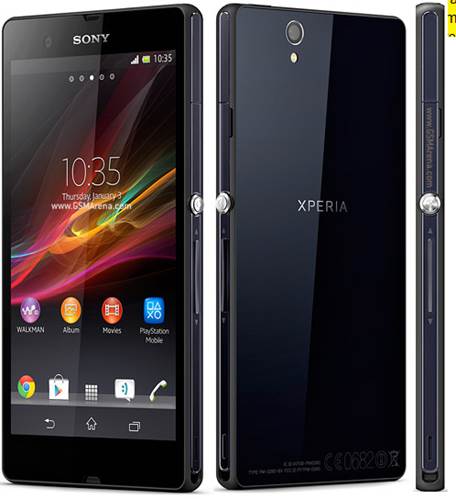
Xperia
Z is Sony’s next step
The Xperia Z is Sony’s next step. The
device catches on to a number of trends superfast performance, larger screen and
a lighter skin while also pushing the boundaries in other areas. The Xperia Z
is the first phone we’ve seen in Europe to pack a full 1080p display, and is
also fully waterproof, ensuring it will continue working in all weather
conditions.
But is the Xperia Z enough to continue
Sony’s upward growth, and can it makes inroads into Samsung’s massive market
share? We’ve gone hands-on with the new handset to discover if it really is a
Galaxy killer.
“The first phone we’ve seen in Europe to
pack a full 1080p display”
Spectacular specs
The spec sheet for the Xperia Z reads like
a checklist of all the key features for a flagship Android smartphone over the
next 12 months. It includes a five-inch display but resists moving into phablet
territory such as with the likes of the Galaxy Note II by minimizing the casing
and fitting into a chassis not much larger than the Galaxy S III. The display
is full HD – 1,080 x 1,920 pixels which amounts to a pixel density of 441
pixels per inch, far beyond last year’s 720p displays which averaged out at
around 320 ppi.
The device runs Android 4.1.2 out of the
box, with an update to 4.2 already promised (and given Sony’s strong track
record on updates we’d expect to see Key Lime Pie on this handset before the
end of the year too). It is powered by a 1.5GHz quad-core Snapdragon S4
processor that has a proven record on speed and battery consumption while the
2GB of RAM on board is another step up from most devices currently on the
market one that is set to become the new standard. There is additionally 16GB
of on-board storage which can be augmented through the memory card slot.
The phone is able to run on 4G networks,
where available, offering download speeds of up to 100Mbps. There is also
Bluetooth 4.0, NFC, DLNA, and MHL for mirroring the display on an HD TV. The
rear camera features a 13-megapixel sensor, with LED flash and full HD video
recording. The front-facing camera is 2.2 megapixels and is HD capable.
Finally the Xperia Z is what you might
describe as ‘life proof’. It is IP57 certified for dust and water resistance –
it is waterproof for up to 30 minutes in one meter of water.
Hardware and design
The Xperia Z maintains the design language
we’ve seen on the Xperia models from the latter part of last year. It is
extremely minimal. The only features on the front are a very small speaker and
microphone, and a mostly hidden front-facing camera. The device uses Android’s
virtual buttons which enables the front casing to be reduced in size, although
it’s not to quite the same striking extent as we’ve seen on Motorola’s RAZR i.
Around the sides, the assorted ports, such as for the micro SD card and
headphones, are safely sealed but remain easily accessible.
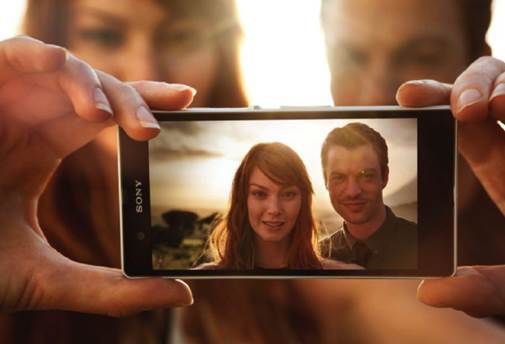
The
Xperia Z boasts a 13-megapixel shooter, but no dedicated camera button
The right-hand side includes a power button
located halfway up the body, perfectly placed under the thumb of your right
hand but a little more difficult to reach in your left, as well as a volume
rocker. In an unwelcome departure for Sony the Xperia Z does not have a
dedicated camera button. This may be a consequence of the waterproofing and
it’s a shame that it has gone. Not only does the button make shooting photos
easier, reducing the likelihood of camera shake ruining your shots as you prod
the screen to take a snap, but Sony’s implementation in the past had been
excellent, enabling you to wake the phone and take a photo with a single button
press even when it is locked and password protected. The back of the phone is
flat black (at least on the version we were using; other colors are available)
and largely featureless. The camera lens, LED flash and Xperia logo are pretty
much all you get. A large screen inevitably makes for a large phone, but you
might be surprised to find the Xperia Z is not all that much larger than the S
III. Indeed it measures just 0.4mm wider, and at 7.9mm is 0.7mm thinner. The
length is a relatively modest 2.4mm greater. However, the device does feel
larger than the S III or the HTC One X due to its angular design. While other
handsets have curves that help them fit very comfortably in your hand, the Z
has squared off corners in all directions. This is fine for the front-on
profile, but when you grip the phone the edges do dig into your palm and
fingers. It’s the same effect we encountered with the equally large Xperia T,
and though it’s not off-putting, it does simply have the effect of making the
device feel a touch larger than it is.
Close up
Key features in the Xperia Z
Power
The power button is positioned halfway up
the right side of the casing – perfectly placed for right handed users
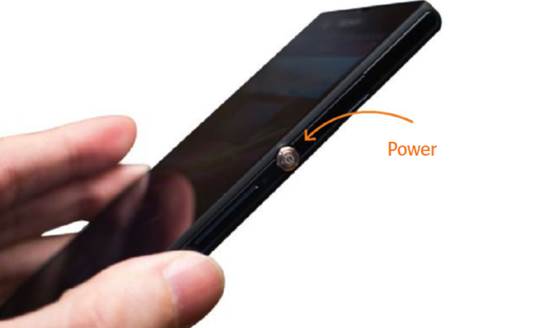
The
power button is positioned halfway up the right side of the casing
Minimalist
The ultra-minimalist design of the Xperia Z
sees an almost featureless front, with even the earpiece tucked quietly away
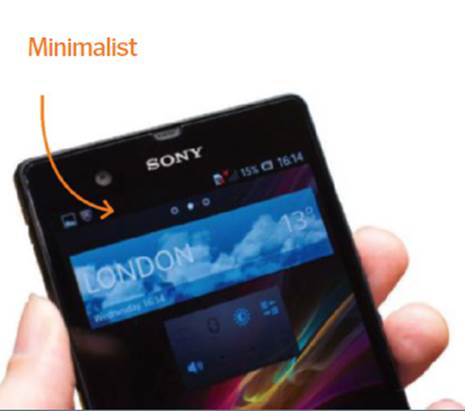
The
ultra-minimalist design of the Xperia Z sees an almost featureless front
Camera
The 13-MP camera is located at the top of
the rear, with a glass covering. A small LED flash is just below it
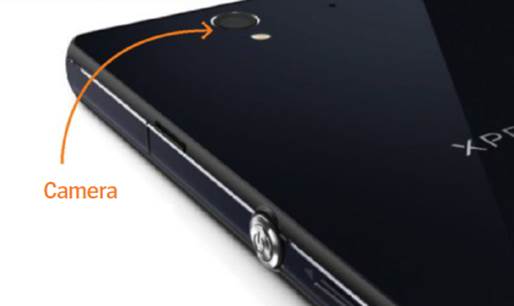
The
13-MP camera is located at the top of the rear
Technical specs
·
Operating system: Android 4.1.2
·
Processor: Snapdragon S4 Krait 1.5GHz quad-core
·
Memory: 2GB RAM, 16GB storage
·
Dimensions: 139 x 71 x 7.9mm
·
Weight: 146g
·
Display size: Five-inch
·
Display resolution: 1080 x 1920 pixels
·
Expansion slot: micro SD